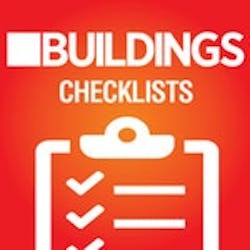High performance isn’t just about energy efficiency and waste diversion anymore. With the threat of extreme weather looming, roofing investments are moving beyond sustainability and into a whole-building focus on resilience, notes Justin Koscher, president of the Polyisocyanurate Insulation Manufacturers’ Association (PIMA).
Resilience as a concept means that a building can withstand extreme weather events and remain habitable without power for at least a short period. That starts with a solid, well-constructed roof.
As any facilities manager knows, if the roof gives way, it doesn’t matter how well-built the core of the building is – moisture will come pouring in through the smallest leak.
A building without a roof is a building that will be uninhabitable until the roof is repaired or replaced.
“If you can’t get into your building for two to three weeks because it’s not operational, that impacts your business,” Koscher explains. “There’s a business case to be made for making sure that buildings can bounce back, especially hospitals and other critical facilities.”
A building without a roof is a building that will be uninhabitable until the roof is repaired or replaced.
Resilient roofs share six important elements, according to roofing expert James R. Kirby, a building and roofing science architect with GAF:
1. Wind resistance
The roof should be able to withstand high winds. Building codes have become more strict on wind design in recent years, but designing for higher wind speeds than code requires is never a bad idea.
2. Impact resistance
Roofs in all climates are vulnerable to debris, dropped tools from workers and damage from rooftop equipment. Buildings in climates where hail is common have even more to protect against. Materials like cover boards help absorb impact without crushing, Kirby explains.
BUILDINGS Checklist
Build Your Roofing File
As a facilities manager or owner, having organized, updated maintenance and financial records of crucial components of your building is important. Especially if something happens and you need this information available quickly. Get yours now >>
3. Insulation and roof color
Both of these considerations play a crucial role in keeping building occupants comfortable and productive. A high R-value roof allows less heat to transfer in and out of the building, so the building can stay comfortable longer even during a power outage. A roof with a reflective color reduces solar heat gain, an important consideration in the summer.
4. Daylighting
Rooftop daylighting systems can bring in enough light to keep a building functional without power. However, skylights and other daylighting systems can lower the roof’s R-value, so make sure the trade-off doesn’t have an oversized impact on comfort and heat transfer, suggests Kirby.
5. Energy production
The rooftop is a popular location for solar panels, which can help maintain the power supply during an outage. However, most PV systems rely on the grid and can’t fully power the building during a blackout, so consider pairing your solar panels with battery storage.
Two handpicked articles to read next:
About the Author
Janelle Penny
Editor-in-Chief at BUILDINGS
Janelle Penny has been with BUILDINGS since 2010. She is a two-time FOLIO: Eddie award winner who aims to deliver practical, actionable content for building owners and facilities professionals.


